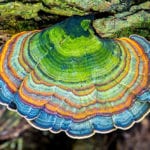 Weird Stuff
Weird Stuff  Weird Stuff
Weird Stuff  Our World
Our World 10 Ways Your Christmas Tree Is More Lit Than You Think
 Movies and TV
Movies and TV The 10 Coolest Stars to Set Sail on The Love Boat
 History
History 10 Things You Didn’t Know About the American National Anthem
 Technology
Technology Top 10 Everyday Tech Buzzwords That Hide a Darker Past
 Humans
Humans 10 Everyday Human Behaviors That Are Actually Survival Instincts
 Animals
Animals 10 Animals That Humiliated and Harmed Historical Leaders
 History
History 10 Most Influential Protests in Modern History
 Creepy
Creepy 10 More Representations of Death from Myth, Legend, and Folktale
 Technology
Technology 10 Scientific Breakthroughs of 2025 That’ll Change Everything
 Weird Stuff
Weird Stuff Ten Bizarre Facts About The Doge Meme
 Our World
Our World 10 Ways Your Christmas Tree Is More Lit Than You Think
 Movies and TV
Movies and TV The 10 Coolest Stars to Set Sail on The Love Boat
Who's Behind Listverse?

Jamie Frater
Head Editor
Jamie founded Listverse due to an insatiable desire to share fascinating, obscure, and bizarre facts. He has been a guest speaker on numerous national radio and television stations and is a five time published author.
More About Us History
History 10 Things You Didn’t Know About the American National Anthem
 Technology
Technology Top 10 Everyday Tech Buzzwords That Hide a Darker Past
 Humans
Humans 10 Everyday Human Behaviors That Are Actually Survival Instincts
 Animals
Animals 10 Animals That Humiliated and Harmed Historical Leaders
 History
History 10 Most Influential Protests in Modern History
 Creepy
Creepy 10 More Representations of Death from Myth, Legend, and Folktale
 Technology
Technology 10 Scientific Breakthroughs of 2025 That’ll Change Everything
Ten Strange Ingredients in Everyday Foods & Products
This has what in it?
We’ve all been there. At the supermarket, we pick up an item, flip it over… and see a lengthy list of indecipherable ingredients on the label. Determining exactly what you’re eating seems to require a degree in food science.
In some foods, lurking both on and off the labels are items spanning from the strange yet harmless to potentially damaging to our health. Here are ten. Note: this list excludes widely known examples like anchovies in Worcestershire sauce and castoreum (beaver secretions) in certain flavorings.
Related: Top 10 Strangest Flavoured Foods And Drinks Ever
10 Seaweed in Chocolate Milk
Mmmm. The rich, smooth, chocolate-y goodness of…
Seaweed? Chocolate milk, as well as some ice creams, puddings, and yogurts, often contain carrageenan, a powder made from red seaweed. It helps the other ingredients bind without adding calories or fat content—a big plus as calorie counts and total fats become increasingly scrutinized by consumers at the point of purchase.
A plant-based binder also makes sense for another label-friendly reason: In theory, seaweed is organic. Extracted from a variety commonly called Irish Moss, carrageenan has been used in some cultures’ cuisines for centuries, making its transition into an ingredient emulsifier (a stabilizer) seem natural.
That was, until recently. Food science studies have shown that carrageenan is highly inflammatory and possibly harmful to the digestive tract. It has been loosely—though not concretely—tied to conditions ranging from irritable bowel syndrome and ulcerative colitis to rheumatoid arthritis and even colon cancer.
The USA’s Food & Drug Administration (FDA) has balked at removing carrageenan from the roster of ingredients “generally recognized as safe”—an industry acronym called GRAS—and even ignored a recommendation from the National Organic Standards Board to strip it of its “organic” status. However, it’s becoming more recognized that carrageenan should not be considered organic, a designation downgrade that could cause a sea change in its usage.[1]
9 Rocks in Toothpaste
Four out of five dentists recommend brushing thoroughly twice a day with a soft-bristle toothbrush and… rocks?
Yep, in many toothpastes, a brittle white rock called gypsum is a key ingredient. It’s also an additive in some canned vegetables and ice creams because who wouldn’t want to eat the same stuff used to make casts for broken arms and legs?
All wisecracks aside, gypsum is exceptionally versatile. As a safe-to-ingest sulfate mineral, gypsum is not only the primary ingredient in many toothpaste brands but also is the source of “added calcium” in products whose labels make such claims. It also has a “settling effect” on liquids, leading to its use in conditioning water used for brewing beer and even to settle clay and dirt particles in ponds without harming aquatic life.
In your apartment building, gypsum is a key ingredient in sheetrock and drywall. In the land that we sow to grow food, gypsum, sometimes called “land plaster,” improves soil’s workability and receptivity to water and also counteracts the corrosive effects of alkalinity. Farmers growing corn, cotton, alfalfa, and wheat rely heavily upon gypsum.
Finally, gypsum once played a key role in the entertainment industry. Before the age of CGI, film and television producers would drop “showers” of gypsum in front of cameras to simulate snow.[2]
8 Sheep’s Wool Grease in Cereal
Enjoying your breakfast? You might be eating a sheep byproduct. Many kinds of cereal have a form of Vitamin D derived from sheep’s wool grease. Humans call it lanolin; sheep (probably) call it “ba-a-a-nolin.”
For one, lanolin makes the cereal non-vegetarian and, should you enjoy it with non-dairy milk, non-vegan. It’s also just a bit strange to be eating part of a coat at 8:00 am.
Lanolin is a substance that sheep use to wick water from their wool—one of the many reasons it makes for an ideal insulator. Among the cereals that contain lanolin are Nestle’s Milo brand and certain Kellogg Special K varieties. Several other Vitamin D-fortified food products also have lanolin, including baby formula, margarine, and certain milks and yogurts.
Lanolin is perfectly safe—in fact, it’s a popular ingredient in nipple soothing cream for breastfeeding mothers. In foods, though, the vegan/non-vegan issue has made waves because lanolin is often a hidden “sub-ingredient.” Since Vitamin D can be derived from either plants or animals, the packaging of most products does not make its source readily obvious to consumers.[3]
7 Sawdust in…
Well, a lot. “Most of us eat a lot of sawdust” isn’t a sentence that should be accurate, yet it is.
Much of the hullabaloo over the under-the-radar wood content of many foods dates to 2012 when agents of the U.S. FDA—assumedly yelling, “Show me your hands! Drop the grater!”—paid a surprise visit to a cheese factory in rural Pennsylvania.
What the culinary cops found just plain stunk because Castle Cheese Inc. was literally cutting the cheese: Instead of producing 100% real parmesan, the company was adding significant amounts of cheap additives, such as wood pulp. The result was degraded cheese products available at some of America’s largest grocery store chains.
Not cool. Castle Cheese’s president, Michelle Myrter, would be sentenced in federal court to three years’ probation, a $5,000 fine, and 200 hours of community service. For the record, that’s approximately 200 hours more than any members of Purdue Pharma’s Sackler family received for starting an opioid crisis currently killing tens of thousands of Americans annually.
In any event, wood pulp, commonly called cellulose, is a safe, common additive in plenty of foods, from tomato sauces and salad dressings to packaged cookies and breakfast cereals. While it’s not okay that certain grated cheese brands are as much as 10% sawdust, cellulose is a fiber easily broken down by our bodies. Weird and misleading? Yes. Dangerous? No.[4]
6 Maggots in Mushrooms
While this entry doesn’t cover an official, on-the-label ingredient, we’d be remiss not to reassure readers—especially those in America—that the U.S. FDA is totally on top of this whole maggots-in-mushrooms issue.
Per official FDA policy, if there are “20 or more maggots of any size per 100 grams of drained mushrooms” or “five or more maggots two millimeters or longer per 100 grams,” the FDA will take swift and decisive action. Otherwise, good luck determining whether that slithery thing you just sucked down was a particularly slimy mushroom or a perfectly normal maggot.
A 2009 New York Times piece titled (what else?) “The Maggots in Your Mushrooms” discusses the wide swath of disgusting detritus the U.S. food supply contains—completely rubber-stamped by the government. The FDA permits a certain percentage of “natural contaminants,” a non-vomit-inducing phrase meaning bugs, molds, rodent hair and droppings, and, of course, maggots.
It’s all listed in the FDA’s handy-dandy “Food Defect Levels Handbook: Levels of Natural or Unavoidable Defects in Foods That Present No Health Hazards for Humans.” Unfortunately, one less-than-reassuring category is “Foreign Matter,” which includes sticks, stones, burlap bagging, and even cigarette butts (assumedly for that down-home smoky flavor).
Unsurprisingly, mushrooms are far from the only eyebrow-raiser. For example, tomato paste and pizza sauces are allowed 30 or more fly eggs per 100 grams, or 15 or more fly eggs and one or more maggots per 100 grams. Hmm, I think that sawdust sounds good about now![5]
5 Brominated Vegetable Oil in Soda
What quenches your thirst AND does an exceptional job with a kitchen fire? Well, water, I suppose, but that’s so 19th century.
Brominated vegetable oil, or BVO, contains bromine, which is found in toxic flame retardants. And chances are, it’s also in the soda in your fridge. BVO acts as a binding agent in liquids, keeping artificial flavors from separating from the rest of the liquid and settling to the bottom of the container.
Bromine is bad for both fires and our bodies. It can irritate skin and the linings of the mouth, nose, and digestive tract. Longer-term exposure can cause neurologic symptoms like headaches, memory loss, and even impaired balance or coordination. While the worst of these effects have been linked to chronic use of bromide salts as sleep medications, there have been instances of people experiencing memory loss, skin rashes, and nerve problems after guzzling excessive amounts—more than two liters a day—of soda containing BVO. And though few people are likely to drink such voluminous quantities of soda, bromine seems to build up in the body, potentially leading to an accumulative damaging effect.
If you think this is something that likely doesn’t belong in your root beer, you’re not alone: BVO has been banned as a food additive in many countries, but not in the USA, whose FDA is too busy raiding renegade cheese factories and measuring the maggot content of mushrooms.[6]
4 Silly Putty in Fast Food
The good news: If you feel like eating silly putty, you likely won’t need to wait too long for it. Oh, and you can probably order fries with your order at the same time. The bad news: You probably shouldn’t eat silly putty.
Dimethylpolysiloxane, also known as polydimethylsiloxane (PDMS), is a form of silicone used in many fast foods as an anti-foaming agent, which apparently is important. It’s also a key ingredient in Silly Putty, a stretchy, ooey-gooey children’s toy that starts with a smile and ends stomped into the living room carpet. PDMS also can be found in caulks, adhesives, aquarium sealants, polishes, cosmetics, and silicone-based lubricants. Delicious, all.
The U.S. Food & Drug Administration approved PDMS’s use in 1998. It soon made its way into popular fast food items like Chick-fil-A chicken sandwiches, McDonald’s chicken nuggets, KFC mash potatoes and biscuits, Taco Bell cinnamon twists, and Five Guys French fries. Likely, the additive flies under the radar because there is a hell of a lot of other reasons not to ingest the aforementioned items.
Not into fast food? No worries. You can get your fill of Silly Putty goodness in several other products. Dimethylpolysiloxane also can be found in many vinegars, chewing gums, and chocolates. It is also added to cooking oils to prevent them from bubbling up when frozen ingredients are added.[7]
3 Plastics Elasticizer in Breads & Other Carbs
Almost 500 foods found in North American grocery stores contain a potentially hazardous industrial chemical used to increase the elasticity of plastics. Azodicarbonamide, or ADA, makes a scrumptious cameo in many carbohydrates like breads, bagels, tortillas, hamburger and hot dog buns, pizzas, and pastries.
Azodicarbo… (pauses to rest fingers) …namide is used as a flour bleaching and oxidizing agent in dough. The former whitens finished products, and the latter improves overall baking performance. It’s also found in shoes and yoga mats—handy for burning off all those carbs.
Several consumer groups have called for ADA’s banishment, and in 2014, sandwich chain Subway announced it was removing the chemical from its foods. Considering its refusal to cease operations in Russia, let’s go ahead and call that a PR gimmick rather than an act of corporate responsibility.
In any event, azodicarbonamide is approved for food use in the USA and Canada. However, Australia and several EU countries have banned ADA in food.
So, is ADA safe? The World Health Organization cites that epidemiological studies in humans have produced “abundant evidence that azodicarbonamide can induce asthma, other respiratory symptoms, and skin sensitization” in people working with the chemical. This means the risks seem to be higher for those laboring in food factories rather than consumers. As such, the Environmental Working Group has recommended manufacturers end its use in food.[8]
2 Antifreeze in Cake Mix, Frosting & More
Remember that episode of The Simpsons where Bart is an exchange student in France and stays with despicable winemakers who spike their wine with antifreeze? Turns out that wasn’t such a stretch.
Propylene glycol is the active ingredient in antifreeze. Since it has a significantly lower freezing point than water, adding it to a car’s cooling system allows it to be pumped around the engine, passing through warm parts and absorbing heat. It can then transfer heat to other areas of the engine, as well as to other mission-critical components.
Oddly, propylene glycol also can be found in a variety of foods, where it is used to maintain “just right” moisture levels via its absorbent properties. Many foods—especially confectionaries—have challenges with moisture accumulation, including cake mixes, frosting, certain ice creams, flavored iced tea mixes, and artificial sweeteners.
Ingesting small amounts of propylene glycol is considered safe, but the organic chemical compound made headlines in 2014 when Fireball Cinnamon Whisky was pulled off the shelves in three Scandinavian countries for containing too much to meet EU standards.
While the USA’s Centers for Disease Control insists it would be virtually impossible to ingest toxic amounts of propylene glycol via consumer food products, in large doses, it can cause skin irritation or itchiness and redness. Acute exposure could even lead to cardiovascular or neurotoxicological issues.[9]
1 Not-so-Sushi: Fake Fish
Does it even count as a “weird ingredient” if the whole thing is a fraud? You be the judge—but you should know about this anyway.
Many of us patronize sushi restaurants despite knowing things aren’t always what they seem with seafood. In addition to the spicy crab roll not being actual crab (it’s a starchy and finely pulverized white fish concoction), mislabeled fish in the supply chain has been among the most common forms of food fraud for decades. This is because it’s exceedingly easy to take a cheap fish and label it as an expensive one.
So sometimes that tuna isn’t actually tuna. But ninety-four percent of the time? According to food journalist Larry Olmsted’s 2016 book Real Food/Fake Food: “Consumers ordering white tuna get a completely different animal, no kind of tuna at all, 94 percent of the time.” Check, please.
Per Olmstead, the fish often substituted for tuna is escolar, a bottom-feeder commonly called the Ex-Lax fish for its mouthwatering ability to cause gut discomfort and soft stool. They get you coming in and going out, apparently.
In fact, escolar is so troublesome that it’s been banned in many countries, most notably sushi originator Japan. The U.S. disallowed it in the early 1990s before unbanning it in 1998 because, sure, why not? The issue is incredibly widespread: One mid-2010s study said 39% of the restaurants it surveyed in New York City serve fraudulent fish—including every single sushi restaurant its researchers visited.[10]








